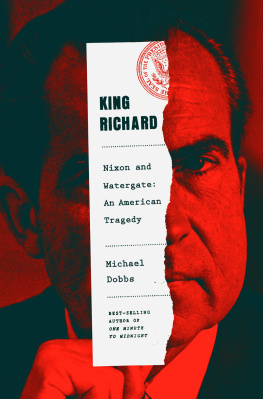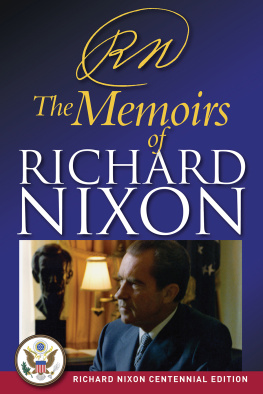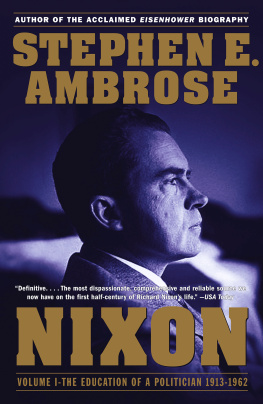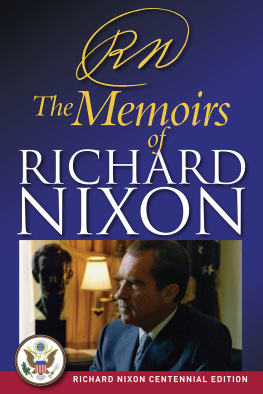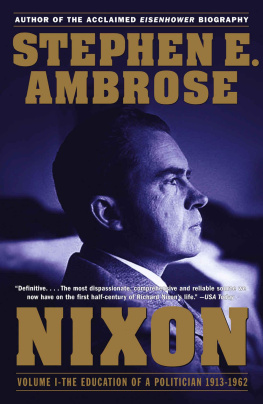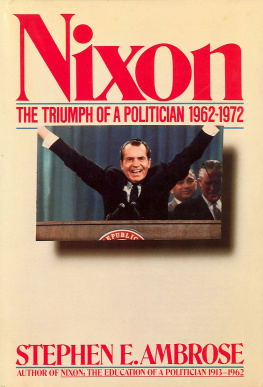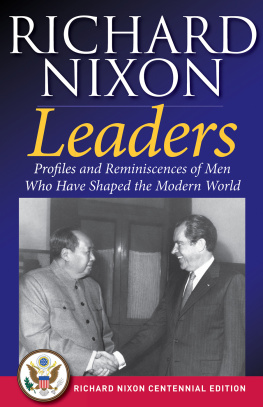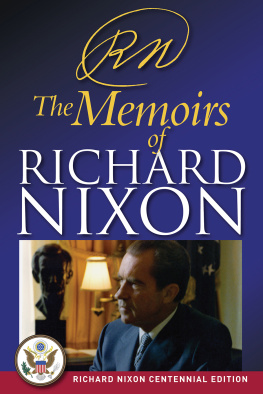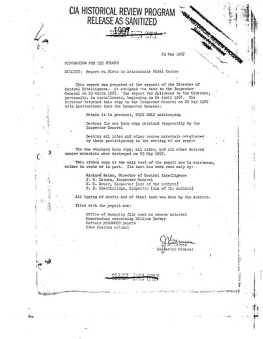Thank you for downloading this Simon & Schuster eBook.
Join our mailing list and get updates on new releases, deals, bonus content and other great books from Simon & Schuster.
C LICK H ERE T O S IGN U P
or visit us online to sign up at
eBookNews.SimonandSchuster.com
We hope you enjoyed reading this Simon & Schuster eBook.
Join our mailing list and get updates on new releases, deals, bonus content and other great books from Simon & Schuster.
C LICK H ERE T O S IGN U P
or visit us online to sign up at
eBookNews.SimonandSchuster.com
A LSO BY S TEPHEN E. A MBROSE:
Halleck: Lincolns Chief of Staff
Upton and the Army
Duty, Honor, Country:
A History of West Point
Eisenhower and Berlin, 1945
Rise to Globalism:
American Foreign Policy 1938-1990
The Supreme Commander:
The War Years of General Dwight D. Eisenhower
Crazy Horse and Custer:
The Parallel Lives of Two American Warriors
Ikes Spies:
Eisenhower and the Espionage Establishment
Eisenhower:
Soldier, General of the Army, President-Elect
1890-1952
Eisenhower: The President
Pegasus Bridge: June 6, 1944
Nixon:
The Education of a Politician 19131962
Nixon:
The Triumph of a Politician 1962-1972
Eisenhower: Soldier and President

Simon & Schuster Building
Rockefeller Center
1230 Avenue of the Americas
New York, New York 10020
www.SimonandSchuster.com
Copyright 1991 by Stephen E. Ambrose
All rights reserved including the right of reproduction in whole or in part in any form.
First Touchstone Edition 1992 TOUCHSTONE and colophon are registered trademarks of Simon & Schuster Inc.
Designed by Edith Fowler
Cover design by Robert Anthony, Inc.
Cover photograph by Dafydd Jones
Library of Congress Cataloging-in-Publication Data
Ambrose, Stephen E.
Nixon.
(Revised for volume 3)
Includes bibliographical references and index.
Contents: v. 1. The education of a politician, 1913-1962v. 2. The triumph of a politician, 19621972 v. 3. Ruin and recovery, 19731990.
1. Nixon, Richard M. (Richard Milhous), 1913 2. PresidentsUnited StatesBiography. 3. United StatesPolitics and government1945 I. Title.
E856.A72 1987 973.924092 [B] 86-26126
ISBN 0-671-69188-0
ISBN 0-671-79208-3 (pbk)
ISBN 978-1-4814-2413-4 (eBook)
T O THE WOMEN IN MY LIFE:
M OIRA, S TEPHENIE , G RACE , C ELESTE , E DIE, AND C ORINA
CONTENTS
FOREWORD
T HIS IS the political story of the century. It is a story of high drama and low skulduggery, of lies and bribes, of greed and lust for power, of abuse and misuse of power. It features attack and counterattack, vicious infighting, and constant psychological warfare. It includes high-minded appeals to basic constitutional doctrine along with base attempts to rewrite the Constitution. It involves fundamental questions of democracy, freedom, justice, and just plain decency.
At stake is the Presidency of the United States, as it was in 197374 and as it would be in the future.
The central character is Richard M. Nixon. The drama revolves around him. He is not only the lead actor but also the author, director, and producer of the play. All Presidents command attention, as did Nixon from 1969 through 1972, but from January 1973 through August 1974, he became a national obsession.
Most of what happens in the following narrative happened because Nixon so willed it, although not the climax. Still, at almost any time between January 1973 and August 1974 he could have brought down the curtainby confessing, by resigning, by burning the tapes, by defying the Special Prosecutor, the courts, and the Congress, or through a number of other possible actions.
Instead, he chose to try to save all by risking all. He tiptoed on the edge of the precipice, buffeted by storms, trying not to look down, striving to maintain his balance and hold his job. He was heroic, admirable, and inspiring while simultaneously being dishonorable, despicable, and a horrible example. It was a role only Richard Nixon could have invented or played.
The supporting cast is a kaleidoscope of American life and politics. There is a loving family, a wife of strength and courage and loyalty, daughters and sons-in-law who provide support. Then there are the judges, the bureaucrats, and most of all Nixons fellow politicians. Like him, they seldom rise above their milieu. Self-serving actions appear far more often than high-minded ones. Partisanship almost always comes before principle. There is precious little that is edifying in their behavior, and much that is dismaying.
This is a play that does not edify or enlighten or uplift. There is no moral lesson to be learned from a play in which many of the characters, much of the time, are rotters.
Yet there is a hero. Justice does prevail, virtue does triumph, despite the shortcomings, human failings, selfishness, and mendacity that all but overwhelm. That hero, much battered and abused throughout the play, rises in the end to achieve vindication. That hero is the American system of justice, as embodied in the Constitution.
But this is no simple morality play, with good conquering evil at the climax. If it were, it would not be so compelling a production. Justice wins, and the American system triumphs, but at a heavy cost. The United States and the world had to payand are still payinga price for Nixons resignation. Within less than a decade of his disgrace, many who had clamored loudest for his head found themselves, to their utter amazement, wishing they had Dick Nixon back again, so unhappy were they with his successors and with the consequences of the repudiation of Nixonian Republicanism.
Incredibly, unbelievably, he does come back. Were this really a play, instead of real life, the story would end with his resignation. But Nixon is Nixon. There is no one else like him for refusing to quit, for plotting and executing comebacks, for winning redemption, for self-resurrection. Within a decade and a half of his resignation, he had not only become Americas elder statesman but was threatening to become Americas beloved elder statesman.
I have loved writing this book.
CHAPTER ONE
THE NEW AMERICAN REVOLUTION AND TROUBLES IN VIETNAM
November-December 1972
O N N OVEMBER 7, 1972, Richard Milhous Nixon won a landslide victory in the presidential contest by a staggering 61 to 39 percent. This was the climax to twenty-six years of campaigning. His re-election, however, was a personal triumph only. The Republican Party lost, as the Democrats held onto their control of both houses of Congress.
The two victories, by the Republicans in the presidential race and by the Democrats in the congressional races, dominated American politics over the following twenty-two months, a period characterized by more bitterness, divisiveness, and pure hatred than any since Reconstruction. The unanticipated, the unwelcome, and the unimaginable became the norm.
This unhealthy situation came about: Because of the way Nixon had conducted his re-election campaign, which left his opponents furious; because of ethically questionable and possibly illegal acts carried out by his men during his first term, which left him vulnerable; because of the long-drawn-out retreat from Southeast Asia, which left the hawks with no incentive to defend him and the doves with feelings of bitterness over the death and destruction that had marked the period 1969-72 in Vietnam; because of Nixons determination to take on not only the Democrats but the basic structure of American government; and because of Nixons deep-rooted, long-standing anger at his opponents, real and imagined, which led him to ill-considered and ill-tempered outbursts, which in turn goaded his opponents into extremism, thus raising the stress on the already badly battered body politic.
Next page



